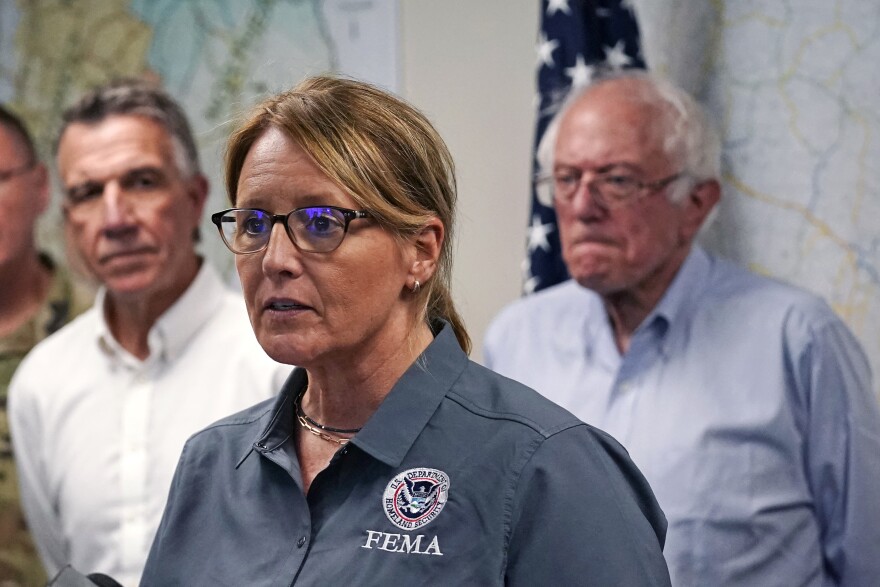As communities across New Hampshire clean up from the latest round of extreme rain and flooding, they'll have to wait a bit longer to learn whether the federal government can offer any funding to help.
State officials say they're preparing an application for federal disaster aid — which could cover extreme weather dating back to June 17 — though it's not clear whether previous summer storms would fall into a disaster declaration alongside the most recent destruction from this weekend. If granted, such a declaration opens up a range of financial help to cities, towns, and individuals.
But it's also not clear when such a request might be granted, and when money might start to flow to New Hampshire.
“FEMA is fairly inundated, as you can imagine right now in this region, in the northeast region, with the flooding in Vermont as well as some other states,” said Vanessa Palange, a state emergency management spokesperson.
New Hampshire has a month to ask the Federal Emergency Management Agency for a disaster declaration tied to recent floods and could request an extension. But Gov. Chris Sununu said he expects the the request to be made sooner.
“We’ll just get our data in as fast as we can and hopefully they can process it quickly,” Sununu said.

Sununu said he recently asked FEMA Administrator Deanne Criswell to grant an immediate emergency declaration for New Hampshire, as the agency did for Vermont last week.
“I talked to Director Chriswell, and unfortunately, she was not willing and not able to do that,” Sununu said.
While not nearly as severe as the devastation seen in Vermont, the recent flooding in New Hampshire did major damage to 25 state-maintained roads and more than 100 roads maintained by local governments, according to state transportation officials.
In lieu of an emergency declaration from the federal government, state officials are preparing to submit a formal application for a “major disaster declaration.” Officials from New Hampshire Homeland Security and Emergency Management said they’ve reached out to every municipality about storm-related damages and supplied communities with forms to document losses.
Next, FEMA would help the state do a more detailed assessment of damages across New Hampshire. If total estimated damages exceed $2.4 million, the state can make a formal request for a major disaster declaration.

In the meantime, local officials like Winchester Town Administrator Kathy Miner are trying to figure out how to pay for a mounting pile of storm-related expenses.
Miner said Route 10 in Winchester was “totally washed away” in the July 9 flooding. It's mostly fixed now, with some paving to complete.
That road was the state’s responsibility. But the town is on the hook to fix a box culvert that was also damaged by the storm, which Miner estimates will cost $200,000.
The town received assistance through FEMA for damage sustained during the 2021 floods. But Winchester had to pay upfront for repairs and wait to be reimbursed — a process Miner said would be difficult with a project as expensive as repairing the culvert.
“Our budgets aren’t large budgets," she said. "So when a storm or something of this magnitude happens — for instance, a $200,000 culvert — that’s not just money we have sitting around."
And as climate change fuels more extreme weather, Miner says that kind of damage is becoming a more frequent issue.
“Instead of every 100 years, it feels like it’s every two years,” she said.
There’s more pressure now, she said, to find a way to get help quicker.
And as governments across the region work to clean up after the recent floods, community-driven recovery efforts are also under way. The New Hampshire Mutual Aid Relief Fund is helping to organize donation drives at local businesses across the state, including Teatotaller and Gibson's Bookstore in Concord, Great North Aleworks and The Green Beautiful in Manchester, Broken Spoon in Franklin and Wrong Brain in Dover.









